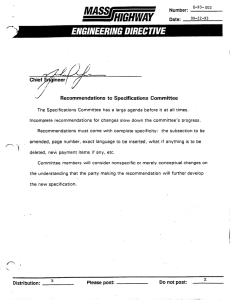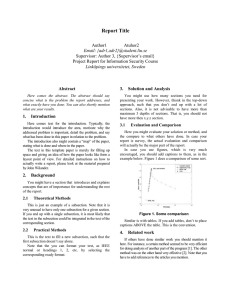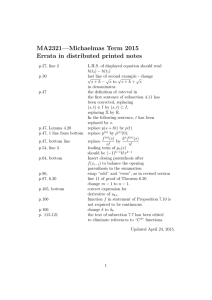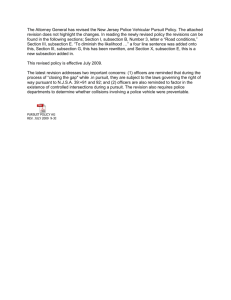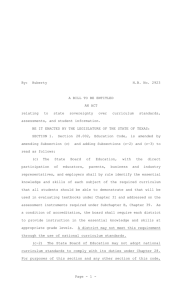Communications Decency Act SECTION 1. SHORT TITLE; REFERENCES.
advertisement
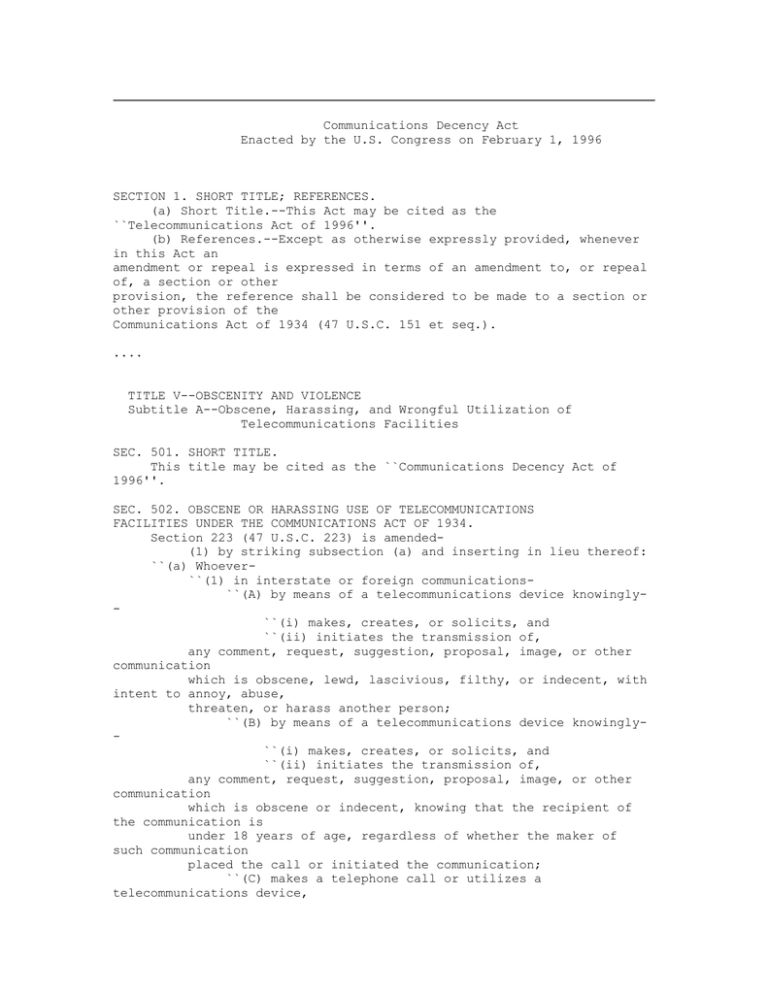
Communications Decency Act Enacted by the U.S. Congress on February 1, 1996 SECTION 1. SHORT TITLE; REFERENCES. (a) Short Title.--This Act may be cited as the ``Telecommunications Act of 1996''. (b) References.--Except as otherwise expressly provided, whenever in this Act an amendment or repeal is expressed in terms of an amendment to, or repeal of, a section or other provision, the reference shall be considered to be made to a section or other provision of the Communications Act of 1934 (47 U.S.C. 151 et seq.). .... TITLE V--OBSCENITY AND VIOLENCE Subtitle A--Obscene, Harassing, and Wrongful Utilization of Telecommunications Facilities SEC. 501. SHORT TITLE. This title may be cited as the ``Communications Decency Act of 1996''. SEC. 502. OBSCENE OR HARASSING USE OF TELECOMMUNICATIONS FACILITIES UNDER THE COMMUNICATIONS ACT OF 1934. Section 223 (47 U.S.C. 223) is amended(1) by striking subsection (a) and inserting in lieu thereof: ``(a) Whoever``(1) in interstate or foreign communications``(A) by means of a telecommunications device knowingly``(i) makes, creates, or solicits, and ``(ii) initiates the transmission of, any comment, request, suggestion, proposal, image, or other communication which is obscene, lewd, lascivious, filthy, or indecent, with intent to annoy, abuse, threaten, or harass another person; ``(B) by means of a telecommunications device knowingly``(i) makes, creates, or solicits, and ``(ii) initiates the transmission of, any comment, request, suggestion, proposal, image, or other communication which is obscene or indecent, knowing that the recipient of the communication is under 18 years of age, regardless of whether the maker of such communication placed the call or initiated the communication; ``(C) makes a telephone call or utilizes a telecommunications device, whether or not conversation or communication ensues, without disclosing his identity and with intent to annoy, abuse, threaten, or harass any person at the called number or who receives the communications; ``(D) makes or causes the telephone of another repeatedly or continuously to ring, with intent to harass any person at the called number; or ``(E) makes repeated telephone calls or repeatedly initiates communication with a telecommunications device, during which conversation or communication ensues, solely to harass any person at the called number or who receives the communication; or ``(2) knowingly permits any telecommunications facility under his control to be used for any activity prohibited by paragraph (1) with the intent that it be used for such activity, shall be fined under title 18, United States Code, or imprisoned not more than two years, or both.''; and (2) by adding at the end the following new subsections: ``(d) Whoever``(1) in interstate or foreign communications knowingly``(A) uses an interactive computer service to send to a specific person or persons under 18 years of age, or ``(B) uses any interactive computer service to display in a manner available to a person under 18 years of age, any comment, request, suggestion, proposal, image, or other communication that, in context, depicts or describes, in terms patently offensive as measured by contemporary community standards, sexual or excretory activities or organs, regardless of whether the user of such service placed the call or initiated the communication; or ``(2) knowingly permits any telecommunications facility under such person's control to be used for an activity prohibited by paragraph (1) with the intent that it be used for such activity, shall be fined under title 18, United States Code, or imprisoned not more than two years, or both. ``(e) In addition to any other defenses available by law: ``(1) No person shall be held to have violated subsection (a) or (d) solely for providing access or connection to or from a facility, system, or network not under that person's control, including transmission, downloading, intermediate storage, access software, or other related capabilities that are incidental to providing such access or connection that does not include the creation of the content of the communication. ``(2) The defenses provided by paragraph (1) of this subsection shall not be applicable to a person who is a conspirator with an entity actively involved in the creation or knowing distribution of communications that violate this section, or who knowingly advertises the availability of such communications. ``(3) The defenses provided in paragraph (1) of this subsection shall not be applicable to a person who provides access or connection to a facility, system, or network engaged in the violation of this section that is owned or controlled by such person. ``(4) No employer shall be held liable under this section for the actions of an employee or agent unless the employee's or agent's conduct is within the scope of his or her employment or agency and the employer (A) having knowledge of such conduct, authorizes or ratifies such conduct, or (B) recklessly disregards such conduct. ``(5) It is a defense to a prosecution under subsection (a)(1)(B) or (d), or under subsection (a)(2) with respect to the use of a facility for an activity under subsection (a)(1)(B) that a person``(A) has taken, in good faith, reasonable, effective, and appropriate actions under the circumstances to restrict or prevent access by minors to a communication specified in such subsections, which may involve any appropriate measures to restrict minors from such communications, including any method which is feasible under available technology; or ``(B) has restricted access to such communication by requiring use of a verified credit card, debit account, adult access code, or adult personal identification number. ``(6) The Commission may describe measures which are reasonable, effective, and appropriate to restrict access to prohibited communications under subsection (d). Nothing in this section authorizes the Commission to enforce, or is intended to provide the Commission with the authority to approve, sanction, or permit, the use of such measures. The Commission shall have no enforcement authority over the failure to utilize such measures. The Commission shall not endorse specific products relating to such measures. The use of such measures shall be admitted as evidence of good faith efforts for purposes of paragraph (5) in any action arising under subsection (d). Nothing in this section shall be construed to treat interactive computer services as common carriers or telecommunications carriers. ``(f)(1) No cause of action may be brought in any court or administrative agency against any person on account of any activity that is not in violation of any law punishable by criminal or civil penalty, and that the person has taken in good faith to implement a defense authorized under this section or otherwise to restrict or prevent the transmission of, or access to, a communication specified in this section. ``(2) No State or local government may impose any liability for commercial activities or actions by commercial entities, nonprofit libraries, or institutions of higher education in connection with an activity or action described in subsection (a)(2) or (d) that is inconsistent with the treatment of those activities or actions under this section: Provided, however, That nothing herein shall preclude any State or local government from enacting and enforcing complementary oversight, liability, and regulatory systems, procedures, and requirements, so long as such systems, procedures, and requirements govern only intrastate services and do not result in the imposition of inconsistent rights, duties or obligations on the provision of interstate services. Nothing in this subsection shall preclude any State or local government from governing conduct not covered by this section. ``(g) Nothing in subsection (a), (d), (e), or (f) or in the defenses to prosecution under (a) or (d) shall be construed to affect or limit the application or enforcement of any other Federal law. ``(h) For purposes of this section``(1) The use of the term `telecommunications device' in this section``(A) shall not impose new obligations on broadcasting station licensees and cable operators covered by obscenity and indecency provisions elsewhere in this Act; and ``(B) does not include an interactive computer service. ``(2) The term `interactive computer service' has the meaning provided in section 230(e)(2). ``(3) The term `access software' means software (including client or server software) or enabling tools that do not create or provide the content of the communication but that allow a user to do any one or more of the following: ``(A) filter, screen, allow, or disallow content; ``(B) pick, choose, analyze, or digest content; or ``(C) transmit, receive, display, forward, cache, search, subset, organize, reorganize, or translate content. ``(4) The term `institution of higher education' has the meaning provided in section 1201 of the Higher Education Act of 1965 (20 U.S.C. 1141). ``(5) The term `library' means a library eligible for participation in State-based plans for funds under title III of the Library Services and Construction Act (20 U.S.C. 355e et seq.).''. SEC. 503. OBSCENE PROGRAMMING ON CABLE TELEVISION. Section 639 (47 U.S.C. 559) is amended by striking ``not more than $10,000'' and inserting ``under title 18, United States Code,''. SEC. 504. SCRAMBLING OF CABLE CHANNELS FOR NONSUBSCRIBERS. Part IV of title VI (47 U.S. C. 551 et seq.) is amended by adding at the end the following: ``SEC. 640. SCRAMBLING OF CABLE CHANNELS FOR NONSUBSCRIBERS. ``(a) Subscriber Request.--Upon request by a cable service subscriber, a cable operator shall, without charge, fully scramble or otherwise fully block the audio and video programming of each channel carrying such programming so that one not a subscriber does not receive it. ``(b) Definition.--As used in this section, the term `scramble' means to rearrange the content of the signal of the programming so that the programming cannot be viewed or heard in an understandable manner.''. SEC. 505. SCRAMBLING OF SEXUALLY EXPLICIT ADULT VIDEO SERVICE PROGRAMMING. (a) Requirement.--Part IV of title VI (47 U.S.C. 551 et seq.), as amended by this Act, is further amended by adding at the end the following: ``SEC. 641. SCRAMBLING OF SEXUALLY EXPLICIT ADULT VIDEO SERVICE PROGRAMMING. ``(a) Requirement.--In providing sexually explicit adult programming or other programming that is indecent on any channel of its service primarily dedicated to sexually-oriented programming, a multichannel video programming distributor s otherwise fully block the video and audio portion of such channel so that one not a subscriber to such channel or programming does not receive it. ``(b) Implementation.--Until a multichannel video programming distributor complies with the requirement set forth in subsection (a), the distributor shall limit the access of children to the programming referred to in that subsection by not providing such programming during the hours of the day (as determined by the Commission) when a significant number of children are likely to view it. ``(c) Definition.--As used in this section, the term `scramble' means to rearrange the content of the signal of the programming so that the programming cannot be viewed or heard in an understandable manner.''. (b) Effective Date.--The amendment made by subsection (a) shall take effect 30 days after the date of enactment of this Act. SEC. 506. CABLE OPERATOR REFUSAL TO CARRY CERTAIN PROGRAMS. (a) Public, Educational, and Governmental Channels.--Section 611(e) (47 U.S.C. 531(e)) is amended by inserting before the period the following: ``, except a cable operator may refuse to transmit any public access program or portion of a public access program which contains obscenity, indecency, or nudity''. (b) Cable Channels for Commercial Use.--Section 612(c)(2) (47 U.S.C. 532(c)(2)) is amended by striking ``an operator'' and inserting ``a cable operator may refuse to transmit any leased access program or portion of a leased access program which contains obscenity, indecency, or nudity and''. SEC. 507. CLARIFICATION OF CURRENT LAWS REGARDING COMMUNICATION OF OBSCENE MATERIALS THROUGH THE USE OF COMPUTERS. (a) Importation or Transportation.--Section 1462 of title 18, United States Code, is amended(1) in the first undesignated paragraph, by inserting ``or interactive computer service (as defined in section 230(e)(2) of the Communications Act of 1934)'' after ``carrier''; and (2) in the second undesignated paragraph(A) by inserting ``or receives,'' after ``takes''; (B) by inserting ``or interactive computer service (as defined in section 230(e)(2) of the Communications Act of 1934)'' after ``common carrier''; and (C) by inserting ``or importation'' after ``carriage''. (b) Transportation for Purposes of Sale or Distribution.--The first undesignated paragraph of section 1465 of title 18, United States Code, is amended(1) by striking ``transports in'' and inserting ``transports or travels in, or uses a facility or means of,''; (2) by inserting ``or an interactive computer service (as defined in section 230(e)(2) of the Communications Act of 1934) in or affecting such commerce'' after ``foreign commerce'' the first place it appears; (3) by striking ``, or knowingly travels in'' and all that follows through ``obscene material in interstate or foreign commerce,'' and inserting ``of''. (c) Interpretation.--The amendments made by this section are clarifying and shall not be interpreted to limit or repeal any prohibition contained in sections 1462 and 1465 of title 18, United States Code, before such amendment, under the rule established in United States v. Alpers, 338 U.S. 680 (1950). SEC. 508. COERCION AND ENTICEMENT OF MINORS. Section 2422 of title 18, United States Code, is amended(1) by inserting ``(a)'' before ``Whoever knowingly''; and (2) by adding at the end the following: ``(b) Whoever, using any facility or means of interstate or foreign commerce, including the mail, or within the special maritime and territorial jurisdiction of the United States, knowingly persuades, induces, entices, or coerces any individual who has not attained the age of 18 years to engage in prostitution or any sexual act for which any person may be criminally prosecuted, or attempts to do so, shall be fined under this title or imprisoned not more than 10 years, or both.''. SEC. 509. ONLINE FAMILY EMPOWERMENT. Title II of the Communications Act of 1934 (47 U.S.C. 201 et seq.) is amended by adding at the end the following new section: ``SEC. 230. PROTECTION FOR PRIVATE BLOCKING AND SCREENING OF OFFENSIVE MATERIAL. ``(a) Findings.--The Congress finds the following: ``(1) The rapidly developing array of Internet and other interactive computer services available to individual Americans represent an extraordinary advance in the availability of educational and informational resources to our citizens. ``(2) These services offer users a great degree of control over the information that they receive, as well as the potential for even greater control in the future as technology develops. ``(3) The Internet and other interactive computer services offer a forum for a true diversity of political discourse, unique opportunities for cultural development, and myriad avenues for intellectual activity. ``(4) The Internet and other interactive computer services have flourished, to the benefit of all Americans, with a minimum of government regulation. ``(5) Increasingly Americans are relying on interactive media for a variety of political, educational, cultural, and entertainment services. ``(b) Policy.--It is the policy of the United States``(1) to promote the continued development of the Internet and other interactive computer services and other interactive media; ``(2) to preserve the vibrant and competitive free market that presently exists for the Internet and other interactive computer services, unfettered by Federal or State regulation; ``(3) to encourage the development of technologies which maximize user control over what information is received by individuals, families, and schools who use the Internet and other interactive computer services; ``(4) to remove disincentives for the development and utilization of blocking and filtering technologies that empower parents to restrict their children's access to objectionable or inappropriate online material; and ``(5) to ensure vigorous enforcement of Federal criminal laws to deter and punish trafficking in obscenity, stalking, and harassment by means of computer. ``(c) Protection for `Good Samaritan' Blocking and Screening of Offensive Material.``(1) Treatment of publisher or speaker.--No provider or user of an interactive computer service shall be treated as the publisher or speaker of any information provided by another information content provider. ``(2) Civil liability.--No provider or user of an interactive computer service shall be held liable on account of``(A) any action voluntarily taken in good faith to restrict access to or availability of material that the provider or user considers to be obscene, lewd, lascivious, filthy, excessively violent, harassing, or otherwise objectionable, whether or not such material is constitutionally protected; or ``(B) any action taken to enable or make available to information content providers or others the technical means to restrict access to material described in paragraph (1). ``(d) Effect on Other Laws.``(1) No effect on criminal law.--Nothing in this section shall be construed to impair the enforcement of section 223 of this Act, chapter 71 (relating to obscenity) or 110 (relating to sexual exploitation of children) of title 18, United States Code, or any other Federal criminal statute. ``(2) No effect on intellectual property law.--Nothing in this section shall be construed to limit or expand any law pertaining to intellectual property. ``(3) State law.--Nothing in this section shall be construed to prevent any State from enforcing any State law that is consistent with this section. No cause of action may be brought and no liability may be imposed under any State or local law that is inconsistent with this section. ``(4) No effect on communications privacy law.--Nothing in this section shall be construed to limit the application of the Electronic Communications Privacy Act of 1986 or any of the amendments made by such Act, or any similar State law. ``(e) Definitions.--As used in this section: ``(1) Internet.--The term `Internet' means the international computer network of both Federal and non-Federal interoperable packet switched data networks. ``(2) Interactive computer service.--The term `interactive computer service' means any information service, system, or access software provider that provides or enables computer access by multiple users to a computer server, including specifically a service or system that provides access to the Internet and such systems operated or services offered by libraries or educational institutions. ``(3) Information content provider.--The term `information content provider' means any person or entity that is responsible, in whole or in part, for the creation or development of information provided through the Internet or any other interactive computer service. ``(4) Access software provider.--The term `access software provider' means a provider of software (including client or server software), or enabling tools that do any one or more of the following: ``(A) filter, screen, allow, or disallow content; ``(B) pick, choose, analyze, or digest content; or ``(C) transmit, receive, display, forward, cache, search, subset, organize, reorganize, or translate content.''. Subtitle Bviolence SEC. 551. PARENTAL CHOICE IN TELEVISION PROGRAMMING. (a) Findings.--The Congress makes the following findings: (1) Television influences children's perception of the values and behavior that are common and acceptable in society. (2) Television station operators, cable television system operators, and video programmers should follow practices in connection with video programming that take into consideration that television broadcast and cable programming has established a uniquely pervasive presence in the lives of American children. (3) The average American child is exposed to 25 hours of television each week and some children are exposed to as much as 11 hours of television a day. (4) Studies have shown that children exposed to violent video programming at a young age have a higher tendency for violent and aggressive behavior later in life than children not so exposed, and that children exposed to violent video programming are prone to assume that acts of violence are acceptable behavior. (5) Children in the United States are, on average, exposed to an estimated 8,000 murders and 100,000 acts of violence on television by the time the child completes elementary school. (6) Studies indicate that children are affected by the pervasiveness and casual treatment of sexual material on television, eroding the ability of parents to develop responsible attitudes and behavior in their children. (7) Parents express grave concern over violent and sexual video programming and strongly support technology that would give them greater control to block video programming in the home that they consider harmful to their children. (8) There is a compelling governmental interest in empowering parents to limit the negative influences of video programming that is harmful to children. (9) Providing parents with timely information about the nature of upcoming video programming and with the technological tools that allow them easily to block violent, sexual, or other programming that they believe harmful to their children is a nonintrusive and narrowly tailored means of achieving that compelling governmental interest. (b) Establishment of Television Rating Code.(1) Amendment.--Section 303 (47 U.S.C. 303) is amended by adding at the end the following: ``(w) Prescribe``(1) on the basis of recommendations from an advisory committee established by the Commission in accordance with section 551(b)(2) of the Telecommunications Act of 1996, guidelines and recommended procedures for the identification and rating of video programming that contains sexual, violent, or other indecent material about which parents should be informed before it is displayed to children, provided that nothing in this paragraph shall be construed to authorize any rating of video programming on the basis of its political or religious content; and ``(2) with respect to any video programming that has been rated, and in consultation with the television industry, rules requiring distributors of such video programming to transmit such rating to permit parents to block the display of video programming that they have determined is inappropriate for their children.''. (2) Advisory committee requirements.--In establishing an advisory committee for purposes of the amendment made by paragraph (1) of this subsection, the Commission shall(A) ensure that such committee is composed of parents, television broadcasters, television programming producers, cable operators, appropriate public interest groups, and other interested individuals from the private sector and is fairly balanced in terms of political affiliation, the points of view represented, and the functions to be performed by the committee; (B) provide to the committee such staff and resources as may be necessary to permit it to perform its functions efficiently and promptly; and (C) require the committee to submit a final report of its recommendations within one year after the date of the appointment of the initial members. (c) Requirement for Manufacture of Televisions That Block Programs.--Section 303 (47 U.S.C. 303), as amended by subsection (a), is further amended by adding at the end the following: ``(x) Require, in the case of an apparatus designed to receive television signals that are shipped in interstate commerce or manufactured in the United States and that have a picture screen 13 inches or greater in size (measured diagonally), that such apparatus be equipped with a feature designed to enable viewers to block display of all programs with a common rating, except as otherwise permitted by regulations pursuant to section 330(c)(4).''. (d) Shipping of Televisions That Block Programs.(1) Regulations.--Section 330 (47 U.S.C. 330) is amended(A) by redesignating subsection (c) as subsection (d); and (B) by adding after subsection (b) the following new subsection (c): ``(c)(1) Except as provided in paragraph (2), no person shall ship in interstate commerce or manufacture in the United States any apparatus described in section 303(x) of this Act except in accordance with rules prescribed by the Commission pursuant to the authority granted by that section. ``(2) This subsection shall not apply to carriers transporting apparatus referred to in paragraph (1) without trading in it. ``(3) The rules prescribed by the Commission under this subsection shall provide for the oversight by the Commission of the adoption of standards by industry for blocking technology. Such rules shall require that all such apparatus be able to receive the rating signals which have been transmitted by way of line 21 of the vertical blanking interval and which conform to the signal and blocking specifications established by industry under the supervision of the Commission. ``(4) As new video technology is developed, the Commission shall take such action as the Commission determines appropriate to ensure that blocking service continues to be available to consumers. If the Commission determines that an alternative blocking technology exists that``(A) enables parents to block programming based on identifying programs without ratings, ``(B) is available to consumers at a cost which is comparable to the cost of technology that allows parents to block programming based on common ratings, and ``(C) will allow parents to block a broad range of programs on a multichannel system as effectively and as easily as technology that allows parents to block programming based on common ratings, the Commission shall amend the rules prescribed pursuant to section 303(x) to require that the apparatus described in such section be equipped with either the blocking technology described in such section or the alternative blocking technology described in this paragraph.''. (2) Conforming amendment.--Section 330(d), as redesignated by subsection (d)(1)(A), is amended by striking ``section 303(s), and section 303(u)'' and inserting in lieu thereof ``and sections 303(s), 303(u), and 303(x)''. (e) Applicability and Effective Dates.(1) Applicability of rating provision.--The amendment made by subsection (b) of this section shall take effect 1 year after the date of enactment of this Act, but only if the Commission determines, in consultation with appropriate public interest groups and interested individuals from the private sector, that distributors of video programming have not, by such date(A) established voluntary rules for rating video programming that contains sexual, violent, or other indecent material about which parents should be informed before it is displayed to children, and such rules are acceptable to the Commission; and (B) agreed voluntarily to broadcast signals that contain ratings of such programming. (2) Effective date of manufacturing provision.--In prescribing regulations to implement the amendment made by subsection (c), the Federal Communications Commission shall, after consultation with the television manufacturing industry, specify the effective date for the applicability of the requirement to the apparatus covered by such amendment, which date shall not be less than two years after the date of enactment of this Act. SEC. 552. TECHNOLOGY FUND. It is the policy of the United States to encourage broadcast television, cable, satellite, syndication, other video programming distributors, and relevant related industries (in consultation with appropriate public interest groups and interested individuals from the private sector) to(1) establish a technology fund to encourage television and electronics equipment manufacturers to facilitate the development of technology which would empower parents to block programming they deem inappropriate for their children and to encourage the availability thereof to low income parents; (2) report to the viewing public on the status of the development of affordable, easy to use blocking technology; and (3) establish and promote effective procedures, standards, systems, advisories, or other mechanisms for ensuring that users have easy and complete access to the information necessary to effectively utilize blocking technology and to encourage the availability thereof to low income parents. Subtitle C--Judicial Review SEC. 561. EXPEDITED REVIEW. (a) Three-Judge District Court Hearing.--Notwithstanding any other provision of law, any civil action challenging the constitutionality, on its face, of this title or any amendment made by this title, or any provision thereof, shall be heard by a district court of 3 judges convened pursuant to the provisions of section 2284 of title 28, United States Code. (b) Appellate Review.--Notwithstanding any other provision of law, an interlocutory or final judgment, decree, or order of the court of 3 judges in an action under subsection (a) holding this title or an amendment made by this title, or any provision thereof, unconstitutional shall be reviewable as a matter of right by direct appeal to the Supreme Court. Any such appeal shall be filed not more than 20 days after entry of such judgment, decree, or order.
